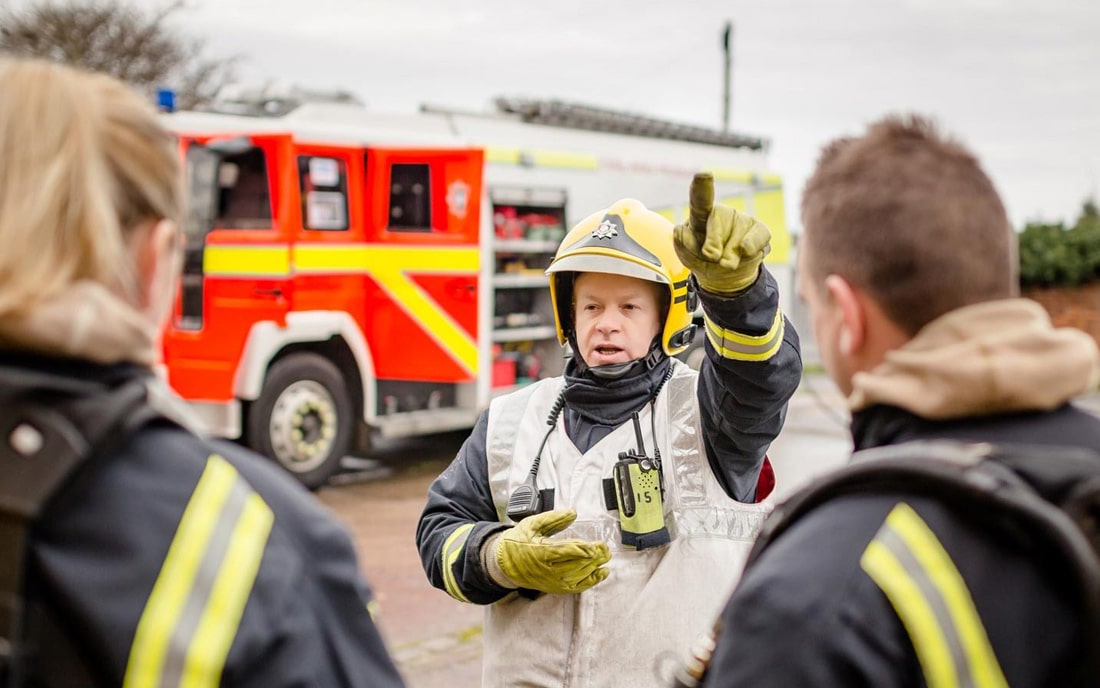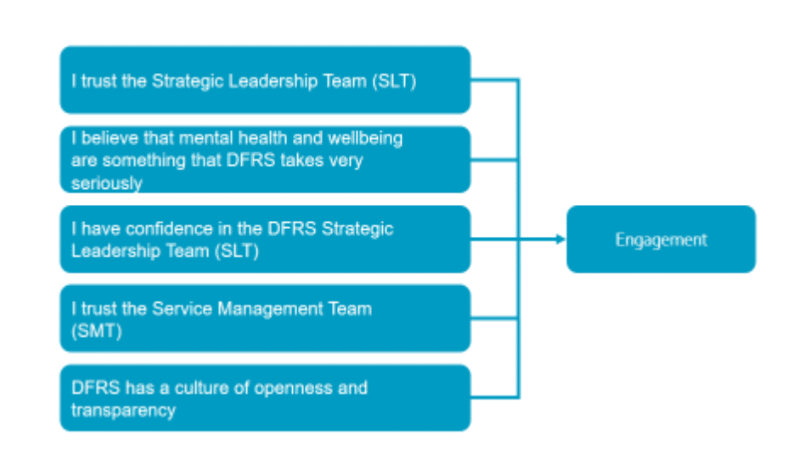
We were delighted to host a Learn and Share event for HR leaders from Fire & Rescue Services and local authorities across the UK, where we shared best-practice examples of aligning employee experience with their target culture.
Watch the recording here. https://vimeo.com/478523773/71c965f3a5
Contact us for the slides.
Sharing Shropshire Fire & Rescue Service’s (SFRS) focus on culture as strategy Rod Hammerton, Chief Fire Officer at SFRS, emphasised how important it is for leaders to be visible and open to feedback. As Rod put it, feedback should be “generously given, and graciously taken”.
In addition, leaders must listen in a meaningful way by demonstrating what has changed as a result of feedback. Rod recommended using ‘You Said, We Did’ as a comms tactic to share the changes that happened as a result of people’s survey responses.
Rod also recommended that leaders invite feedback from groups with full stakeholder coverage, to hear diverse views and build this inclusivity into your organisation’s structures. For example, look at every focus/feedback group you hold and ask yourself “Is there adequate diversity?”, “Is there any challenge?”
Some people may feel alarmed at the prospect of sharing real, honest feedback with leaders; this is again why visible, candid leadership is so vital.
When SFRS ran their 2016 employee engagement ideas survey, they had a low response rate of 59%. Recognising the value of hearing from colleagues across the Service, Rod sat down with every single watch (or shift) to ask for their feedback.
Face to face, people were candid and open with their thoughts. However, many admitted they felt uncomfortable putting candid responses in a survey, as they didn’t know where their responses would end up. For their next employee survey, SFRS emphasised the confidentiality of responses and made sure to share overall survey scores quickly to increase transparency and trust in the process. By 2019, their response rate increased to an impressive 64%.
Contact us to ask to see our survey confidentiality ‘myth-busting’ video for employees.
Both our speakers agreed that for a culture to be truly outstanding, it must be embedded into the heart of your organisation and visible at every moment.
Rod shared how Shropshire Fire & Rescue Service live their values and hold people to account for not doing so. With concerns over Trust and Leadership emerging from their employee engagement survey results, SFRS developed a workplace charter in collaboration with their workforce. The charter acts as a cultural contract, shared by everyone in the organisation. Visible on walls around the Station, Rod noted it is quite common for people to point to the Charter and call people out for not acting in line.
Derbyshire Fire & Rescue Service (DFRS) shared how they embed their values and behaviours from Day 1, to align their culture to the employee experience at every stage, from the candidacy process, to their first day at work, to the objectives in their appraisals.

Of course, your culture must be reflected at the top too. In response to a question from another Fire & Rescue Service about bringing complacent leaders along with cultural change, Rod emphasised that “everyone’s got to be on the bus”. If struggling to get people on board, Rod suggested using a compelling story that brings them into the narrative and helps them overcome their fear of change by bringing them close; “they will either find the exit or engage.”
Related: How to carry out a company culture assessment
We were delighted to be joined by Sheril Buxton, Head of Service Improvement at Derbyshire Fire & Rescue Service, to share how Derbyshire achieved ‘Outstanding’ for their culture in the 2019 HMICFRS Report.
Now that they have created this positive culture, Sheril talked to us about how they sustain it during difficult times and rapid change.
As mentioned above, Derbyshire integrate their values and behaviours at every stage of the employee experience. Visual reminders of their values are given to employees in the form of mouse mats and posters, as well as reflected in their appraisals and objectives.
Sheril recommended using branding to help people attach new initiatives to their purpose. For example, Derbyshire has made a big investment in wellbeing and branded all their wellbeing initiatives ‘Well 4 Work’ so people recognise what it’s attached to. Diversity and Inclusion is a big part of this too, for instance providing all managers with menopause training.
As Rod highlighted, leadership visibility is key. People want and expect informal engagement and interaction with their leaders and are looking to them to demonstrate your organisation’s values. In Sheril’s words, “make sure the story at the top is the same as the story on the shop floor”.
Derbyshire has also embedded an ‘expectation to challenge’ into their culture so when it comes to their planning cycle, colleagues from all groups and at all levels feel entitled to share input, challenge ideas or raise concerns about external factors that might influence their plan.
Lastly, Sheril shared how Derbyshire’s feedback loops and employee survey results help sustain their outstanding culture. For example, the Key Driver Analysis on their People Insight survey results dashboard enables leaders to see what drives overall engagement and where they should focus their efforts for change:

Of course, we had to discuss the impact of COVID and lockdown restrictions on culture within Fire and Rescue Services. With so much uncertainty and rapid change, COVID has had a dramatic impact on the workload, experience and wellbeing of colleagues.
Sheril’s advice was not to wait for difficult times like these to pass, before asking for feedback. In her words, “there’s never going to be a right time” to run an employee survey. But listening to employees is vital to understand their needs and how best to support them.
Sheril also reminded us that “the change curve isn’t linear, there will be back and forth for people” as different groups are affected in different ways by new restrictions or changing circumstances. Change your listening strategy accordingly, to allow for virtual interaction and discussion. Derbyshire Fire and Rescue Service have pivoted from face-to-face workshops and roadshows, to virtual engagement events.
Another question from a Service on the line was “How do we stay connected, and engage our staff as one team during COVID?”. Sheril suggested informal WhatsApp groups that allow teams to interact with one another; virtual lunch breaks; team quizzes and creating a bulletin to share important COVID updates. It’s important to help colleagues combat ‘digital fatigue’, but Sheril suggested people are sometimes looking for permission to have a social break. Encourage people to take a break and engage with one another by organising a programme of social events.
Thank you to our brilliant speakers – Rod Hammerton, Chief Fire Officer at Shropshire Fire and Rescue Service and Sheril Buxton, Head of Service Improvement at Derbyshire Fire and Rescue Service, for sharing their experiences and insights. We hope this was the first of many HR Learn and Share events for the Fire and Rescue sector.
Please contact us if you would like to hear about future events.
Missed the session?
Watch the recording here.
Contact us for the slides.
Sign up to the People Insight newsletter to get your invitation to the next Learn and Share!
You might also enjoy:
How British Business Bank & StepChange embed behavioural change
Involving your employees in the future of work
Changing the narrative around engagement in Fire and Rescue
Engaging on-call staff at Derbyshire Fire and Rescue Service
Workplace culture vs staff engagement